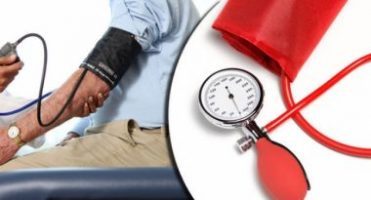- Home
- Editorial
- News
- Practice Guidelines
- Anesthesiology Guidelines
- Cancer Guidelines
- Cardiac Sciences Guidelines
- Critical Care Guidelines
- Dentistry Guidelines
- Dermatology Guidelines
- Diabetes and Endo Guidelines
- Diagnostics Guidelines
- ENT Guidelines
- Featured Practice Guidelines
- Gastroenterology Guidelines
- Geriatrics Guidelines
- Medicine Guidelines
- Nephrology Guidelines
- Neurosciences Guidelines
- Obs and Gynae Guidelines
- Ophthalmology Guidelines
- Orthopaedics Guidelines
- Paediatrics Guidelines
- Psychiatry Guidelines
- Pulmonology Guidelines
- Radiology Guidelines
- Surgery Guidelines
- Urology Guidelines
NUS scientists discover a new way to control blood pressure

Singapore- New and better ways to fight hypertension and low blood pressure may be in the offing, thanks to the National University of Singapore scientists' discovery of how our blood pressure is controlled.
The finding by the multidisciplinary team from the NUS Yong Loo Lin School of Medicine (NUS Medicine) was published online in the April 2018 issue of Circulation, a leading journal in the cardiovascular field. The team showed that Galectin-1, a protein in our body, influences the function of another protein known as L-type (CaV1.2) calcium channel found in the arteries that normally acts to contract the blood vessels. By reducing the activity of these calcium channels, Galectin-1 is able to lower blood pressure.
This project was led by Professor Soong Tuck Wah from the Department of Physiology together with Dr Hu Zhenyu, the lead author of the study. It takes medical science a step closer toward fighting cardiovascular disorders, which are serious global healthcare issues.
Hypertension - a silent killer
Hypertension is a common problem in Singapore and worldwide. About one in four Singapore residents aged 30 to 69 years have hypertension. Importantly, age is a major risk factor for the development of hypertension. Notably, in the 60 to 69 years age group, more than one in two persons in Singapore have hypertension.
According to the World Health Organization, elevated blood pressure is estimated to cause 7.5 million deaths globally, which represents more than 12 percent of all deaths. This is because hypertension is associated with major killers like coronary heart diseases and stroke. In addition, hypertension can also cause renal impairment, retinal hemorrhage, and visual impairment.
Fighting hypertension - the next wave
As hypertension is a common denominator to many serious conditions described above, nipping the problem at its bud will significantly improve our health.
Although patients with Stage I hypertension are mostly recommended to make lifestyle changes to reduce the risks of suffering other cardiovascular diseases, those with Stage 2 hypertension or above have to take anti-hypertensive medicines to control blood pressure.
Calcium channel blockers (CCB) are traditionally used in the clinics to lower blood pressure, but the use of such medications has been associated with increased risk for heart failure in hypertensive patients, particularly those with heart problems, due to their bad side effects.1 Therefore, the development of drugs that could adjust the activity of the L-type (CaV1.2) calcium channel, rather than blocking its normal function altogether, has emerged as a novel research direction for anti-hypertensive therapeutics. The discovery that Galectin-1 can perform such a desired function represents a pathway to control blood pressure.
Galectin-1 reduces the activity of L-type (CaV1.2) calcium channels by blocking their insertion in the cell membrane. The good news is that Galectin-1 only targets this specific type of calcium channel in the blood vessels. It spares other types of calcium channels that are important for the general functions of our body.
"Because Galectin-1 is predominantly found in our blood vessels and because of its selectivity for the Cav1.2 channels, Galectin-1-specific drugs designed to lower our blood pressure are predicted to have minimal side effects," explained Prof Soong, the lead investigator of the study.
"Currently, calcium channel blockers (CCB) are the most popular class of drugs used to treat high blood pressure because of their good side effect profile and their efficacy. However, many patients are troubled by side effects like leg swelling. Galectin-1-specific drugs have the potential for improved control with fewer side effects," said A/Prof James Yip, Senior Consultant, Department of Cardiology at the National University Heart Centre, Singapore.
Added Professor Vernon Oh, Department of Medicine, NUS Medicine, "The reported effects of Galectin-1 protein, and of its analogs, on the blood pressure in various models of human arteries and the circulatory system are encouraging. The results suggest that there is a reasonable likelihood of fabricating an antihypertensive treatment-molecule, based on Galectin-1, which will consistently suppress, without negating, the v1.2 calcium channel in human impedance (resistance) arteries, so lowering the blood pressure in persons with pulmonary hypertension. The results from human pulmonary arteries suggest that the candidate treatment-molecule might also be useful in the condition known as pulmonary arterial hypertension, for which highly cost-effective drugs are lacking." Prof Oh is also a senior consultant at the Division of Advanced Internal Medicine, National University Health System (NUHS).
Conversely, the team also found that interrupting the interaction of Galectin-1 and the L-type calcium channels could raise blood pressure. This finding could lead to new treatments for conditions in which blood pressure is too low, such as sepsis.
For more details click on the link: http://dx.doi.org/10.1161/CIRCULATIONAHA.117.031231

Disclaimer: This site is primarily intended for healthcare professionals. Any content/information on this website does not replace the advice of medical and/or health professionals and should not be construed as medical/diagnostic advice/endorsement or prescription. Use of this site is subject to our terms of use, privacy policy, advertisement policy. © 2020 Minerva Medical Treatment Pvt Ltd